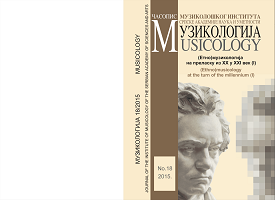The Coexistence of Older and Newer Two-Part Folk Singing in the Village of Prekonoga (Southeastern Serbia) as an Example of Bimusicality
The Coexistence of Older and Newer Two-Part Folk Singing in the Village of Prekonoga (Southeastern Serbia) as an Example of Bimusicality
Author(s): Marija DumnićSubject(s): Customs / Folklore, Music, Cultural Anthropology / Ethnology, Culture and social structure , Sociology of Art
Published by: Muzikološki institut SANU
Keywords: Older two-part folk singing; newer two-part folk singing; rural tradition; bimusicality; Southeastern Serbia; female singing group “Prekonoga”;
Summary/Abstract: This paper deals with two different styles of rural folk singing in Southeastern Serbia which coexisted in the repertoire of a particular folk group. It is interesting that folk singing in the area of Svrljig can be followed through the ethnomusicological publications with music transcriptions from 1931 up to 2011 and it is vital even today. The characteristics of the older two-part singing style typical for this region are explored, as well as those of the newer two-part singing widespread after World War Two. These styles are chronologically compared and specifically presented through the analysis of (personal) field recordings of the group “Prekonoga” who carried both traditions. This characteristic of the group is considered in relation to the concept of bimusicality.
Journal: Muzikologija
- Issue Year: 1/2015
- Issue No: 18
- Page Range: 133-146
- Page Count: 14
- Language: English

